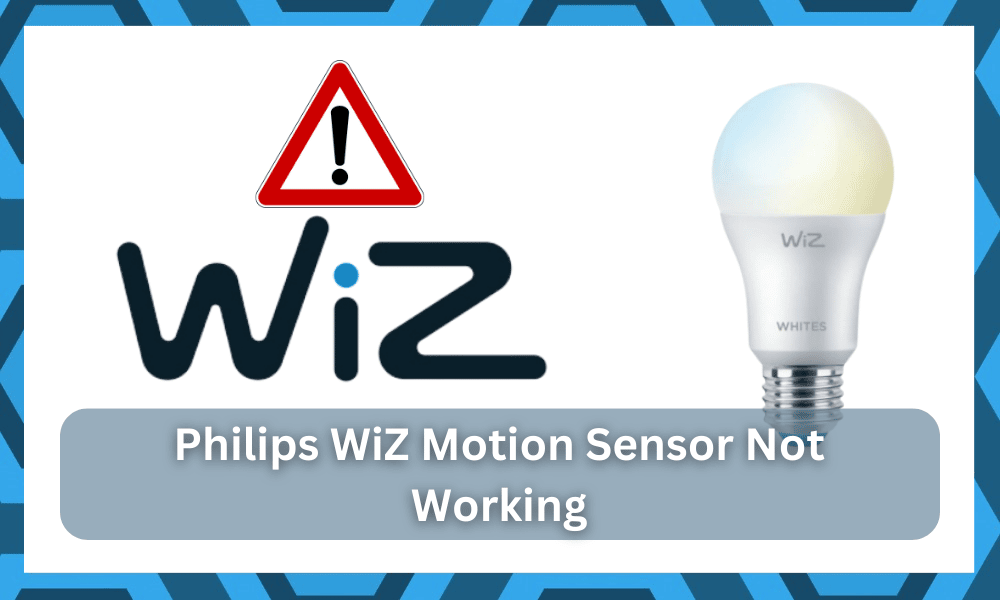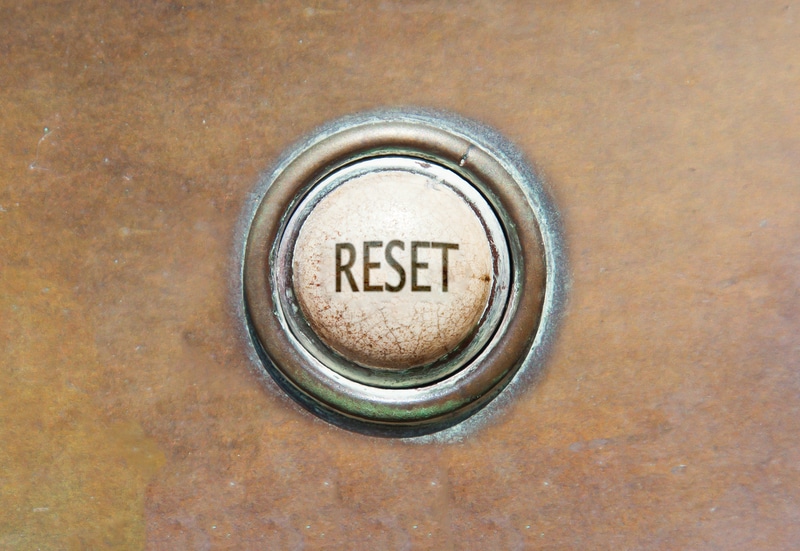
Wireless motion sensors are a great addition to smart home technology as they help bring a variety of benefits to your house.
So, you will be able to engage or disengage automation routines by making use of these sensors. This is especially true for integrated ecosystems.
By just entering a room, you can successfully have all of your lights turn on in an instant on their own. With that said, it can suck to have your motion sensor start acting up due to some reason.
Moreover, the configurations are pretty challenging, and you will likely run into the same complications at some point.
For this reason, you will find that the majority of homeowners rely on certified professionals when it comes to managing and adjusting smart systems.
Seeking help from an expert is a great idea when you’re not that sure about the performance of your system.
Talking about this, a whole lot of users have been found complaining about their Philips Wiz motion sensor not working at all.

Through this article, we will be taking a look at all the solutions for this particular problem. So, let’s have a look!
Fixing Philips Wiz Motion Sensor Not Working
- Outdated Software
A common reason why you may have your motion sensor suddenly start to act up is because of an older version of software installed.
Though if that is the case, then you should be able to get rid of the problem by simply installing updates.
If you have a decent enough connection, this routine will not take you more than a few minutes.
From there, you can go about setting up the unit again, and it will help you bring a resorbable response from the system.
Hopefully, the fix will be as simple as that, and you will not have to worry about more errors down the road.
Just be sure to have a stable network connection to the sensors all the time, and you will have an amazing time with the system.
- Checking the Battery
Any kind of issues with the battery, including having a low charge, can also cause your motion sensors to not function.
So, you should always make sure that the batteries maintain a proper charge. Also, ensure there isn’t any kind of fault in the batteries.
If you do find there to be a fault with the batteries or that the batteries have not been replaced in a few years, then now might be a good time to do so.
You need to make sure that the batteries are in good shape, and you will be able to avoid a lot of errors down the road.
Sometimes, fixing the placement and checking up on the connection points is not a bad idea either.
You have to make sure that the connection points are in good shape and that there is no gunk or debris entrapped in the sensors.
Otherwise, you will remain stuck in these errors and won’t be able to figure out a solution.
So, all that you have to do here is to check up on the battery and adjust the system accordingly. Hopefully, you’ll not have to worry about damaged connection points.
- Range Issues
Let’s not forget the fact that these motion sensors still have some range under which they are able to work.
If you have these sensors too far away from their hub, they won’t work regardless of what you do. So, make sure to pick an ideal location for your hub and sensors.
The two things that you should focus on are the interfaces and the distance between the router and the sensors or the hub.
You need to make sure that the sensors are not only in range but that there are no thick walls or wireless accessories cluttering the environment.
Having too many wireless accessories might sound great, but it will only lead you to more errors down the road.
So, all that you have to do is to check on the connection quality and make sure that it is optimal. Otherwise, you will remain stuck in these errors and won’t be able to find a fix.
- Reset
At this point, you can try resetting your sensors. Do keep in mind that a reset will wipe out all the stored settings that you have saved in these sensors.
Apart from that, you will also have to go through the whole setup again once the reset is done.
Going through all of the configurations from scratch might not sound that appealing to you, but you’re not left with many options at this stage.
So, we suggest that you get through the reset routine and rely on the manual to guide you through the process.
The reset might vary depending on the model and the brand of the sensors you’re using. So, there is no such thing as one reset method that will work out for all of the sensors. For this reason, the only suitable thing is to rely on the manual.
Hopefully, you’ll not have to face any complications when it comes to resetting the system, and fixing the unit will come easily to you.
It all comes down to how you’re planning on addressing the situation, and keeping track of these pointers will have you sorted out in the long run.
- Contacting Support
Before you rule this out to be a hardware fault, one last thing that you can do is to get in touch with the support team. They should have an idea of what might be causing this issue to surface.
So, if you’re not that sold on the idea of spending hours of your time trying to adjust the system, just call the experts.
Depending upon the brand that you choose for the smart sensors, it will not be wrong to assume that the customer support team will be robust.
The majority of smart home brands make it their mission to have exceptional customer care teams.
You will not have to deal with any errors, and fixing the unit will come easily to you when you’re getting help from the experts working at the support channel.
All that you have to do is to open up a support thread or reach out to the dealer regarding these issues.
From there, you can explain your problem in great detail and wait for the professionals to respond.
These experts will be more than happy to guide you through the intricate details of a fix, and you will avoid a ton of complications down the road.
- Faulty Sensor
In case the issue still seems to persist, then there’s a chance that you have a faulty sensor.
If that is so, then your only option would be to get the whole device replaced. Hopefully, you will have an effortless time trying to get a new system.
Most of the devices bring one year of valid warranty. However, that can vary from brand to brand.
You can reach out to the dealer about this issue, and he will guide you more on the warranty status. Similarly, taking a peek at the manual will also help you get the same outcome.
Once you’re a bit sure about the hardware side of things and know that the sensors are defective, you can’t fix them yourself.
It will only be a waste of time, and you might end up voiding the warranty. So, the logical thing to do here is to reach out to the experts and have them guide you through the situation.
Hopefully, you will not have to hassle as much when getting a new piece, and the dealer will be happy to help.
All that you have to do on your end is to provide the dealer with valid proof of purchase, like a receipt. From there, the dealer will take care of the rest and you will be sorted out.
The Bottom Line:

It can be quite frustrating to have your Philips motion sensor not working. Most of the time, this isn’t that big of a deal as these issues are easily fixed.
So, there is no need to get alarmed, and you will maintain complete control of the situation as long as the hardware is in good shape.
Similarly, if you wish to learn how you can troubleshoot your motion sensors as well, then this article should help you a great deal!
It has all the instructions that you will need in order to get your motion sensors working again.
Hopefully, you will not have to go through much hassle, and fixing the situation will be as simple as adjusting the range.
As long as you bought the system from a certified brand, getting a reliable response from the device is not that hard.
You can also reach out to the official support team for help on this matter, and they will be more than happy to assist you.
Customer care is one of the most important elements of every major brand, and you will be able to get a decent enough response from the experts.




